
We saw these houses last fall on a dim and rainy evening, and at that time we explained what little we knew about their history. Here are the ones on Beeler Street in bright sunshine.



Comments

We saw these houses last fall on a dim and rainy evening, and at that time we explained what little we knew about their history. Here are the ones on Beeler Street in bright sunshine.




Old Pa Pitt enjoys pointing out how architects and builders have approached the problem of making cheap housing attractive. These three houses face Friendship Park, where they sit among elaborate apartment buildings and much grander houses. They are very small and quite cheap. Yet because someone put effort into the design, they do not bring down the tone of the neighborhood. Instead, they contribute to a delightful sense of variety.

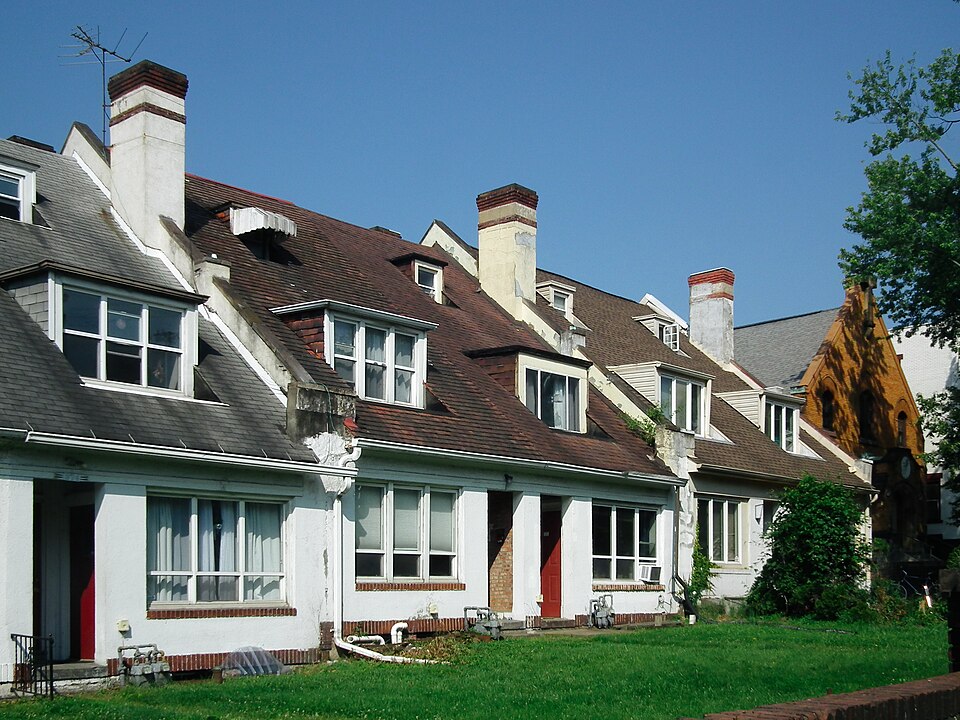
This striking design was by Janssen & Abbott, and it shows Benno Janssen developing that economy of line old Pa Pitt associates with his best work, in which there are exactly the right number of details to create the effect he wants and no more. The row was built in about 1913.1 The resemblance to another row on King Avenue in Highland Park is so strong that old Pa Pitt attributes that row to Janssen & Abbott as well.


These houses are not quite as well kept as the ones in Highland Park. They have been turned into duplexes and seem to have fallen under separate ownership, resulting in—among other alterations—the tiniest aluminum awnings old Pa Pitt has ever seen up there on the attic dormers of two of the houses.

Nevertheless, the design still overwhelms the miscellaneous alterations and makes this one of the most interesting terraces in Oakland.
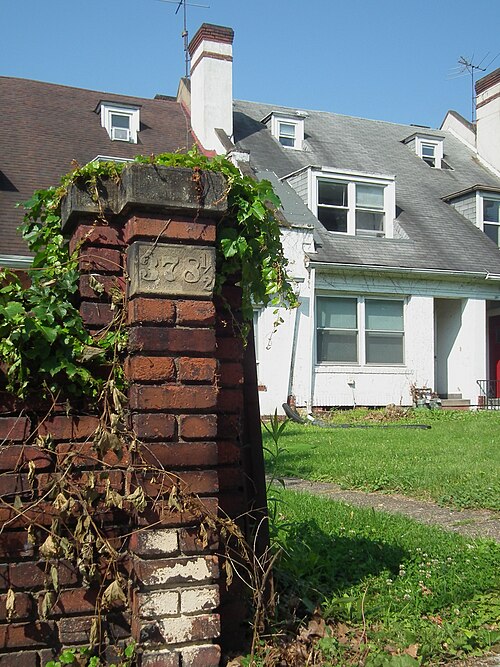
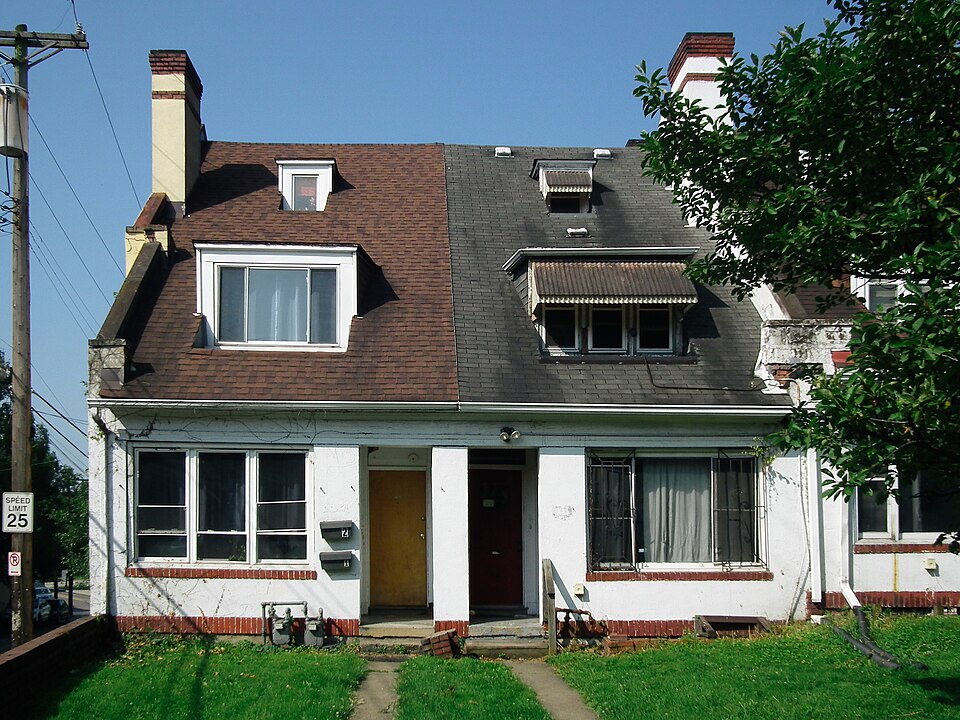
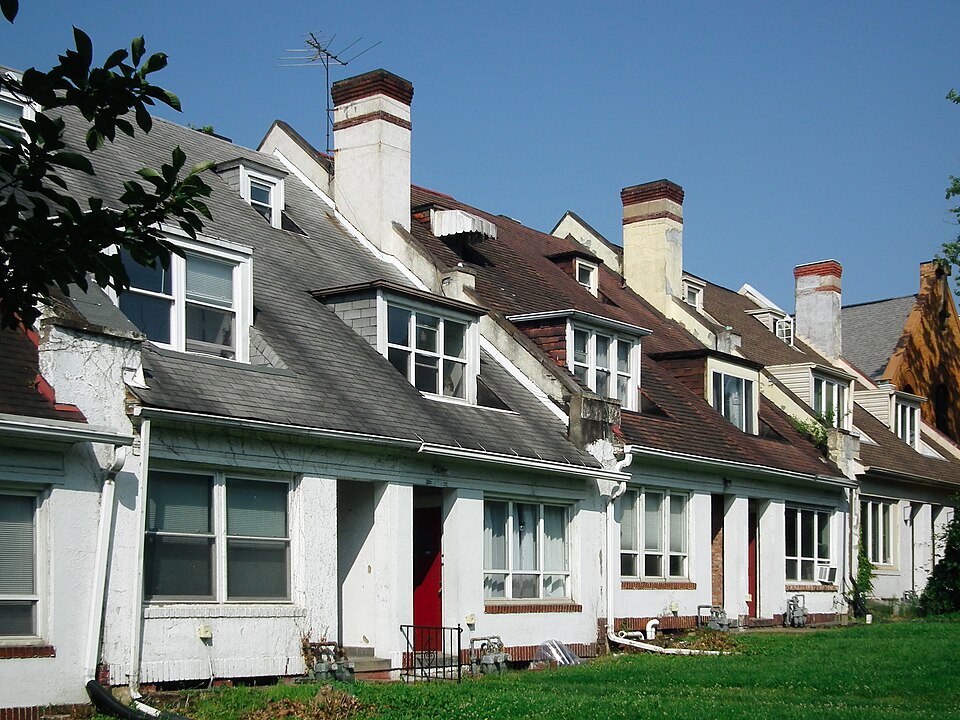
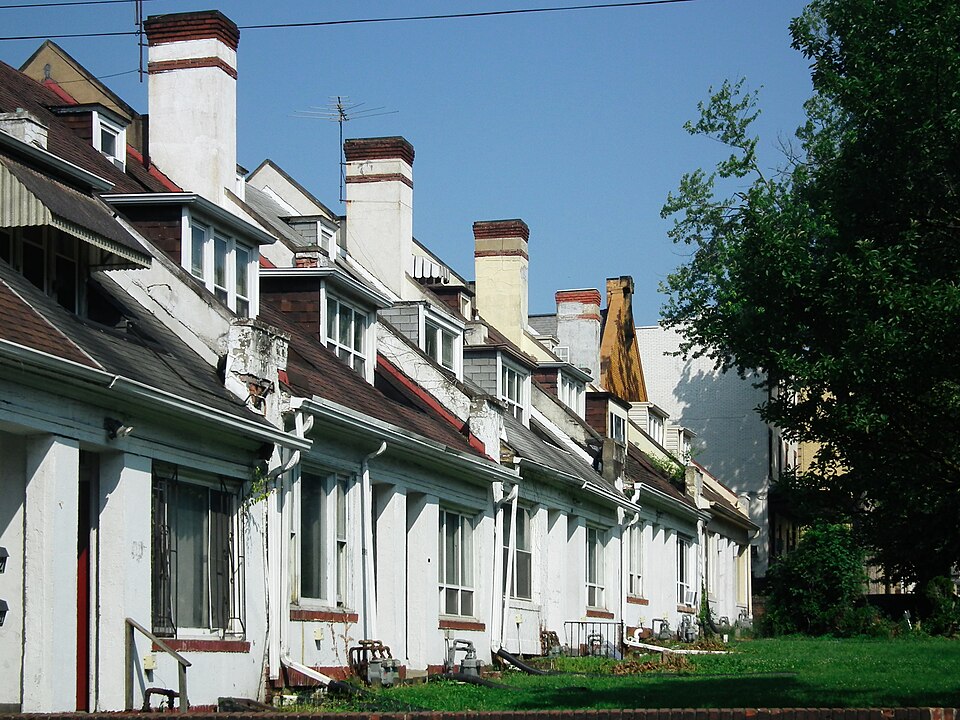
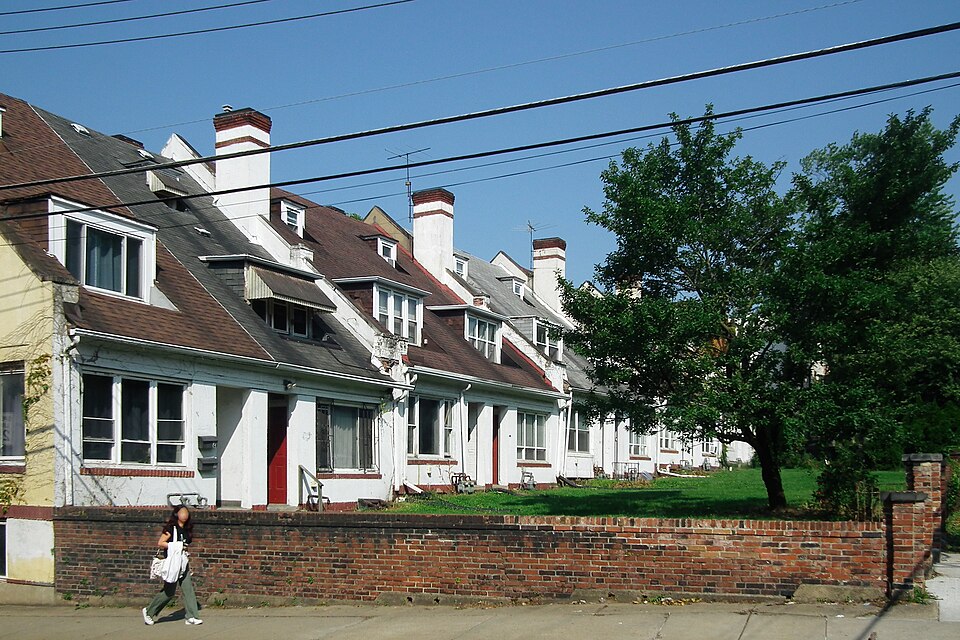
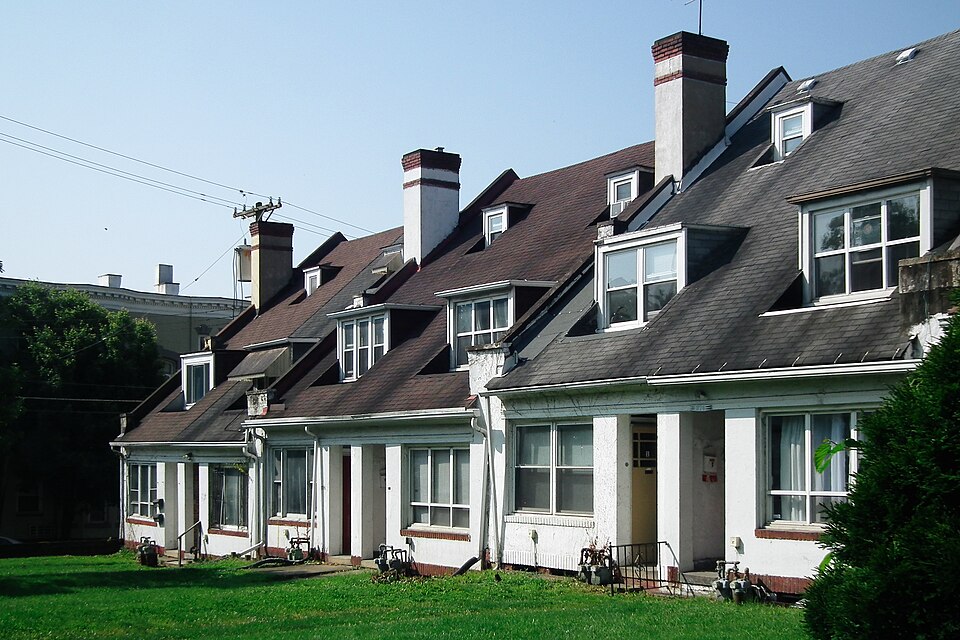
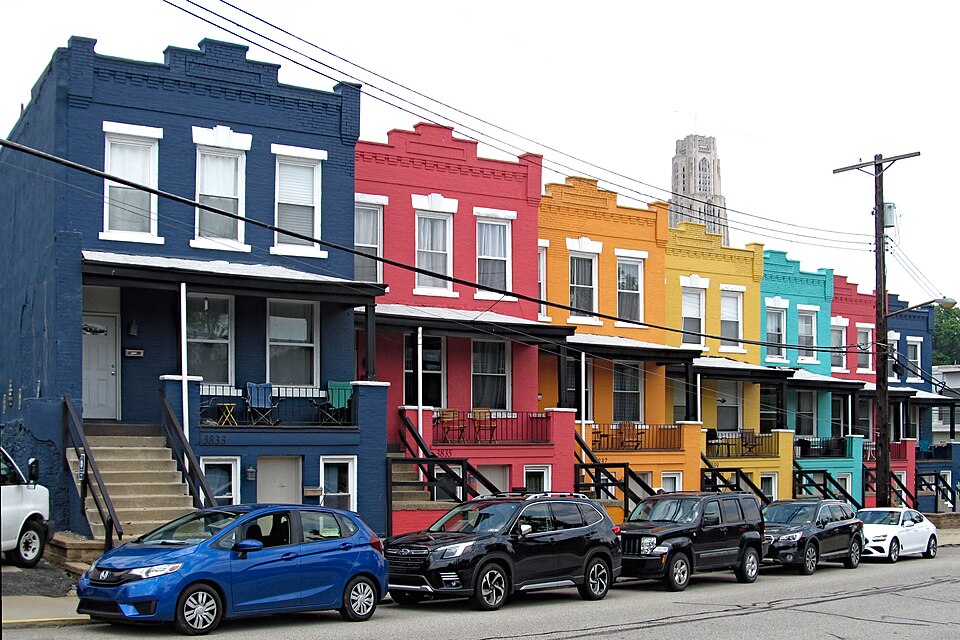
Within their low-budget limits, these little houses are of an attractive design, and they are very well kept up. The odd-shaped lot also means that they are staggered in a visually interesting way. But, still, they would be just seven among thousands of Pittsburgh rowhouses if they had not been painted in this striking way that lights up the whole block.
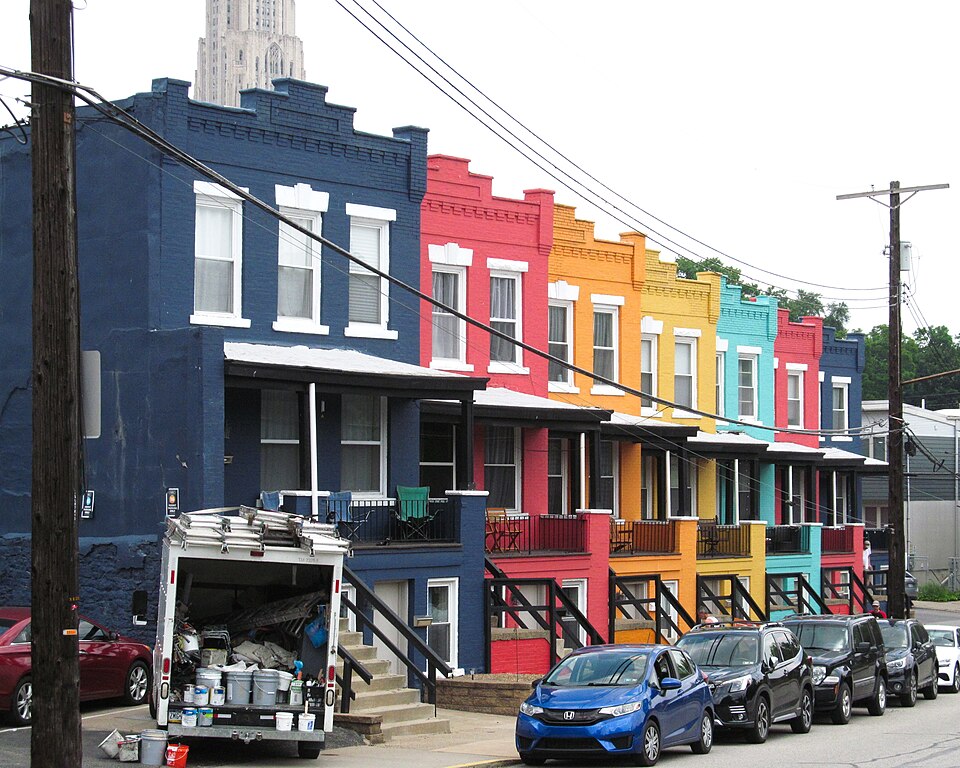
Addendum: The architect was probably Frederick Sauer, who seems to have done all the architectural work for John Dimling, the developer who owned this row. See also the Harry, George, Matilda, Laura, Hilda, and Herbert apartments.
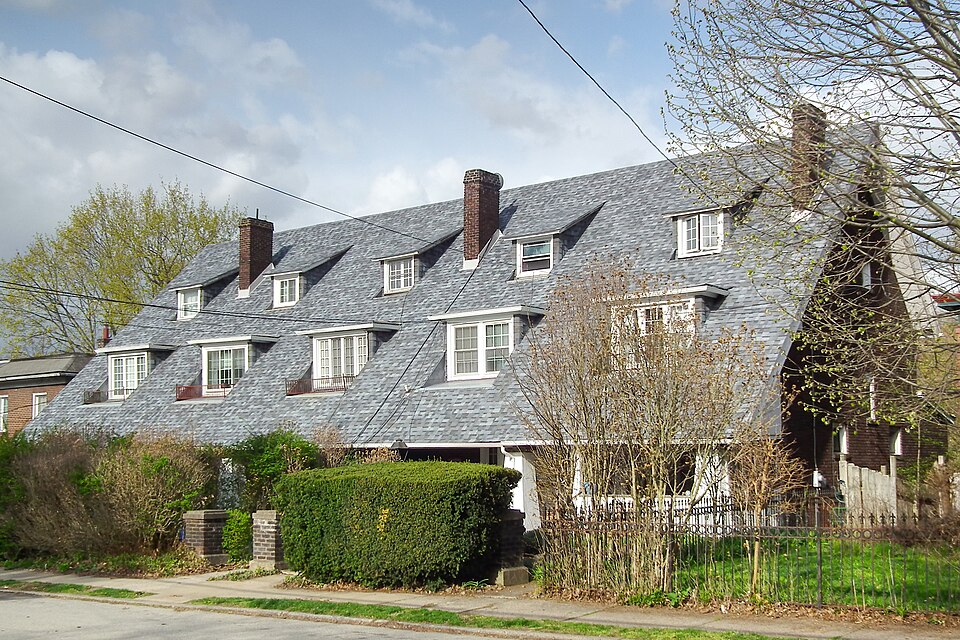
The late Franklin Toker believed that these houses were probably designed by Frederick Scheibler. He was following the original scholars of Frederick Scheibler, Shear and Schmertz, who brought poor old Scheibler out of obscurity in his old age in time to see himself hailed as a prophet of modern architecture.
Father Pitt hates to contradict Dr. Toker, whose encyclopedic knowledge of Pittsburgh architecture was probably unmatched; but Toker has been wrong before. Martin Aurand, whose biography of Scheibler will probably remain the definitive one for generations to come, lists these houses under the “misattributions.”
Old Pa Pitt himself is of the Aurand opinion, and in fact Father Pitt has probable grounds for attributing these houses—without, however, claiming complete certainty—to Benno Janssen. His reason is that there is a very similar terrace in Oakland (368–376 McKee Place) that is almost certainly by Janssen & Abbott. Father Pitt hopes to have pictures of those houses soon; meanwhile, you can take his word for it—or look them up on Google Street View—that it would be odd if one of these terraces were by Janssen & Abbott and the other by Scheibler.
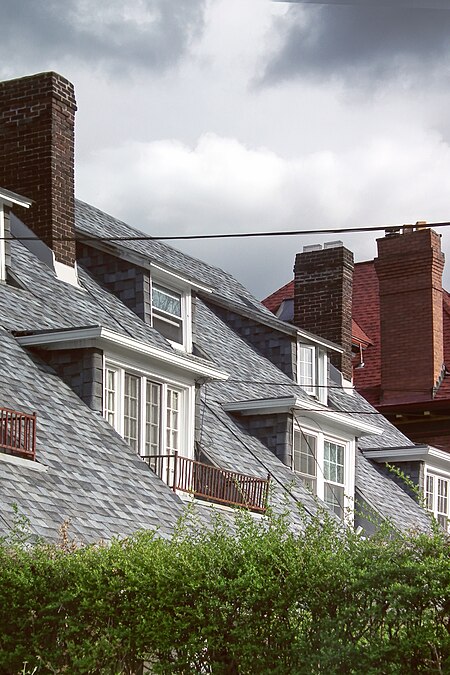
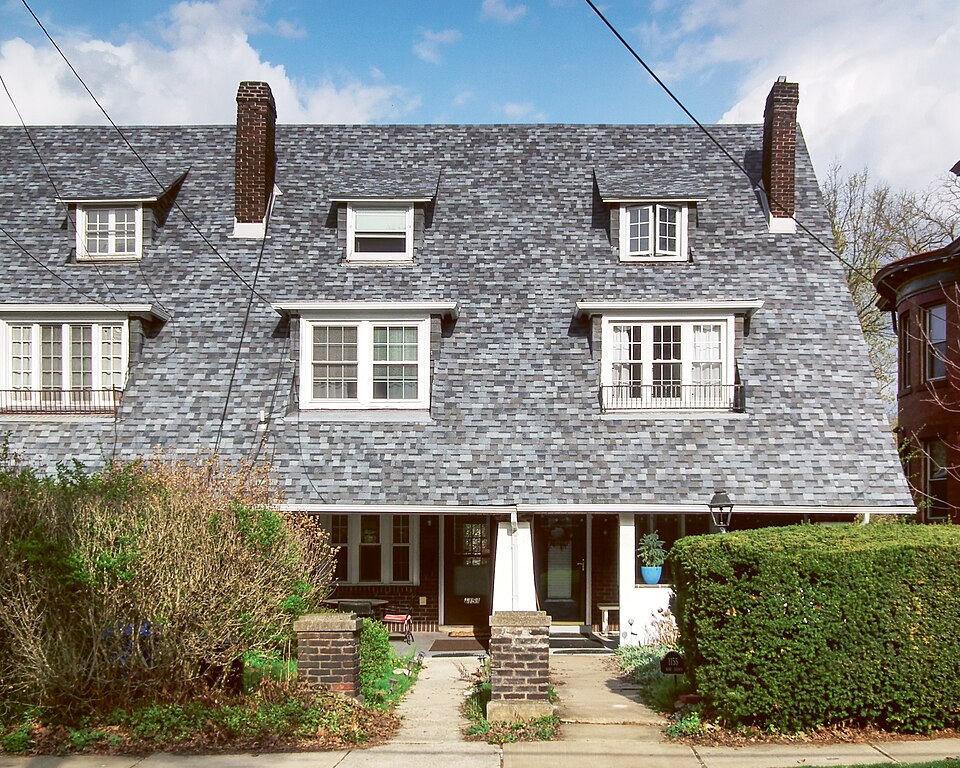

These houses are yet another clever answer to the question of how to design a terrace of relatively inexpensive houses so that they are architecturally attractive and distinctive—so that, in other words, they make potential tenants think they’re getting something special. Compare them, for example, to the row just next door to the left, which was built on a lower budget to a much more ordinary design.


Which design makes you feel special?
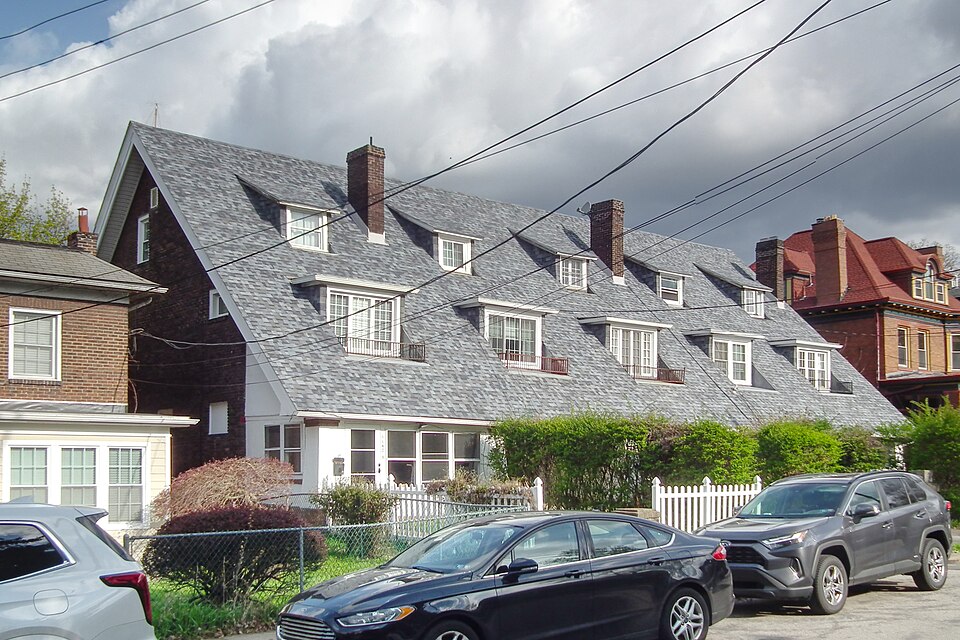

Pittsburgh is full of tiny houses like these, and there’s not much special about these four in particular, except that they demonstrate how even the humblest dwellings have stories to tell after a century of history. These little doubles were originally identical, but they have had separate adventures. Two of the houses have had one of their upstairs windows bricked in; one of them has had the window replaced with a three-staggered-light front door, which is an amusing trick to play on houseguests. The pair on the left have had their flat porch roofs replaced with peaked roofs. All of them probably had green tile (or possibly red) on the overhangs above the upstairs windows. The main purpose of those overhangs is to serve as a signifier of the Spanish Mission style, which was very popular when these houses were built. The overhangs may also serve as a talisman to ward off the aluminum-awning salesman, and it worked in three out of four of the houses.



Designed by our remarkable early modernist Frederick Scheibler, “Meado’cots” is an unusual set of terrace houses built in 1914—another Scheibler answer to the question of how to make cheap rows of houses architecturally attractive. It sat abandoned and boarded up for quite a while, but now it is inhabited and stable. The metal roofs on the central section and the cheap standard doors are not to old Pa Pitt’s taste, but they were within the budget of the new owner, and they keep the buildings standing and in good shape, with the potential for restoration with original materials later.

This composite of the central section from above parked-car level is made possible by a kind neighbor from across the street. He saw us struggling to hold the camera up at arm’s length and called down from a third-floor window to offer the use of his stairs for a better angle. Thank you, Homewood neighbor, for confirming Father Pitt’s impression that Homewood is a place where the neighborly virtues are strong.


Note the corner windows. They would become a badge of modernism in the 1940s, but here they are in 1912!




We have seen many answers to the question of how to make a cheap row of small houses attractive. This streamlined terrace is certainly one of the more interesting answers. It would have been even more striking with the original windows and doors and without the aluminum awnings.




West Park is a pleasant neighborhood in Stowe Township and McKees Rocks, whose absurd border runs diagonally through the neighborhood, slicing through a number of buildings along the way. If you wander through the area, as old Pa Pitt was doing the other day, you will doubtless be struck by a certain characteristic look of the architecture around you. A surprisingly large number of buildings are decorated with patterned brickwork in hand-me-down Art Nouveau patterns. There is also a strong preference for the buff and yellowish shades of Kittanning brick. We suspect that one or two very local architects were responsible for most of these buildings, which give the neighborhood such a distinctive look that you could probably guess where you were right away if you woke up on Broadway Avenue with no memory of how you got there.




Father Pitt was taken with this distinctive corner entrance.





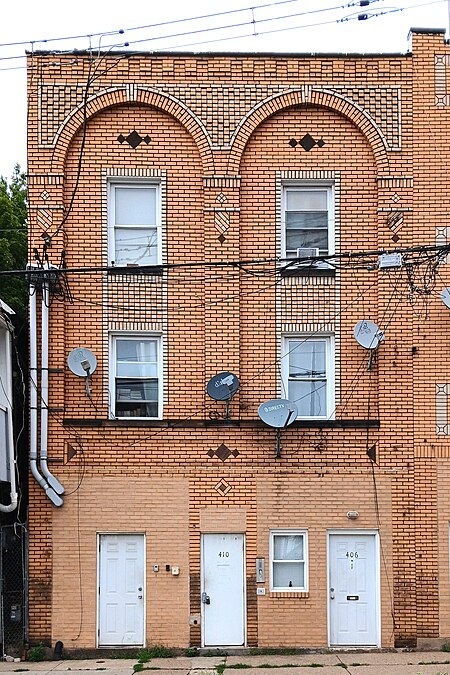
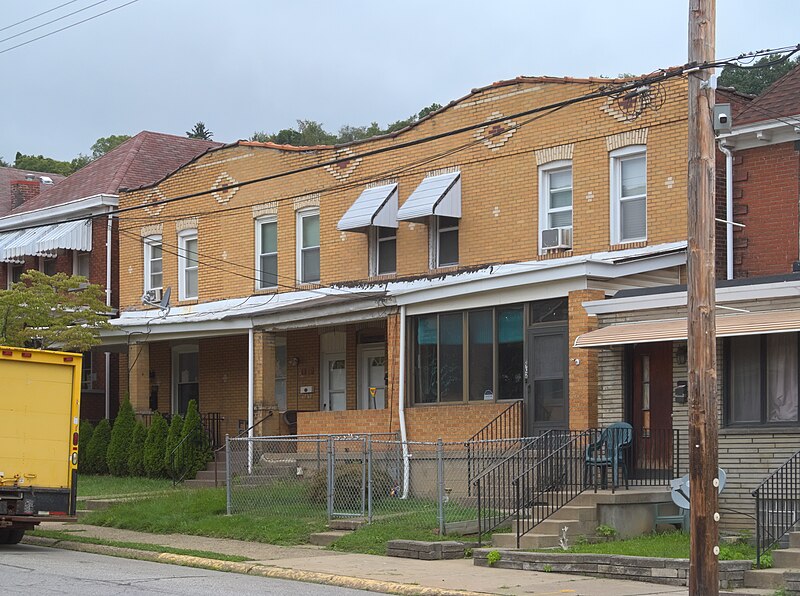

This terrace is particularly interesting for a number of reasons. It seems to have been build a little after 1923, filling in a gap between two existing terraces (both of them in buff Kittanning brick). There was room for seven houses in the row, from which the architect created an impression of four-part symmetry. Mathematically and geometrically, it is an impressive feat.
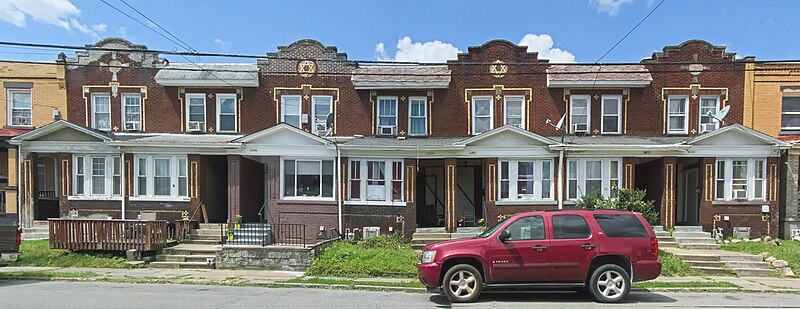
The decorations are also remarkable. The buff-brick stripes certainly stand out (and remind us of several other buildings we’ve seen above), and the Stars of David are, as far as Father Pitt knows, unique in Pittsburgh rowhouses. Father Pitt does not know the history of these houses, but he does note that they are an easy stroll from a large Jewish cemetery.
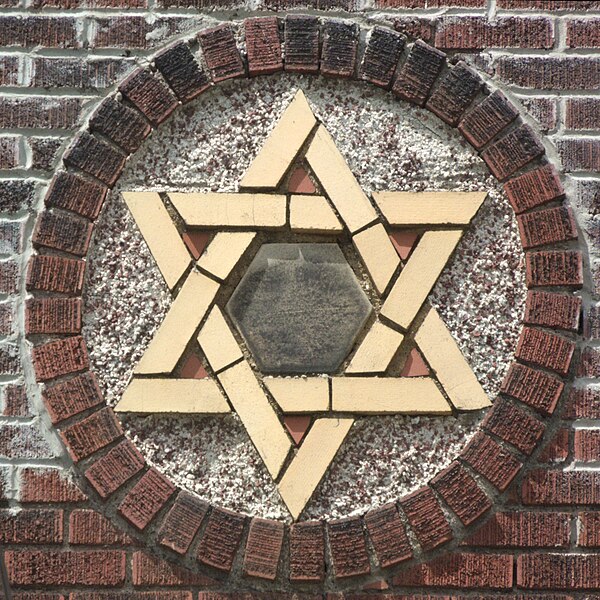
Cameras: Kodak EasyShare Z981; Fujifilm FinePix HS10; Canon PowerShot SX150 IS; Samsung Galaxy A15 5G.

Old Pa Pitt enjoys pointing out the many ways architects and builders have answered the terrace question. “This method of building three or six houses under one roof shows a handsome return on the money invested,” said an article about a terrace of houses in Brighton Heights, but the investment pays off only if tenants are willing to move in. The later Aluminum City Terrace development in New Kensington, designed in a starkly modern style by Walter Gropius and Marcel Breuer, had a hard time attracting tenants in spite of cheap rents and an acute housing shortage, because locals thought it looked yucky.
The terrace question, then, is this: How can we build economical housing that is nevertheless attractive enough to seem desirable to tenants?
This terrace obviously had a higher budget than many, so it answered the question with fine design, elaborate decoration, and good materials. The materials were good enough that they have survived intact more than a century: these houses on Denniston Street, twenty-four of them in four rows of six each, were put up before 1923, but they still have their tile roofs and other decorative elements.

Probably because of the steep hill they occupy, these houses have unusually generous front yards—generous enough for a whole container vegetable garden, for instance.

